Modern snow wear achieves high-quality comfort and performance through various technologies. If you understand the essence of such technology, the way you read the catalog should change at this time when many of the 2022-23 season models are available. So let's take a look at some of the basics to help you understand the latest features.
Functions required for snow wear
It goes beyond mere cold weather clothing. That is the depth and difficulty of snowwear. If it's just to keep out the cold, put on a thick padded garment and that's the end of the story. But skiing is an activity. When you move your body, your body temperature rises and sometimes you sweat. Even more, if you are going to hike in the backcountry, the amount of exercise is sure to explode.
In this way, not only the weather conditions and temperature, but also the physical condition of the skier dynamically changes. Moreover, as long as it is an activity, the ski wear must meet a wide range of conditions, such as not hindering movement. It covers all of them well, and it is based on an exquisite balance of standing over there and standing up here as well.

When I think about the elements that I want in snow wear, various things come to mind. Let's put aside fashion such as color and style for a moment, and focus on "functionality" this time.
● Easy-to-use functions for activities in snowy mountains such as riding and hiking
● Fabric performance of the fabric itself
It seems that it can be broadly divided into Let's take a look at each one.
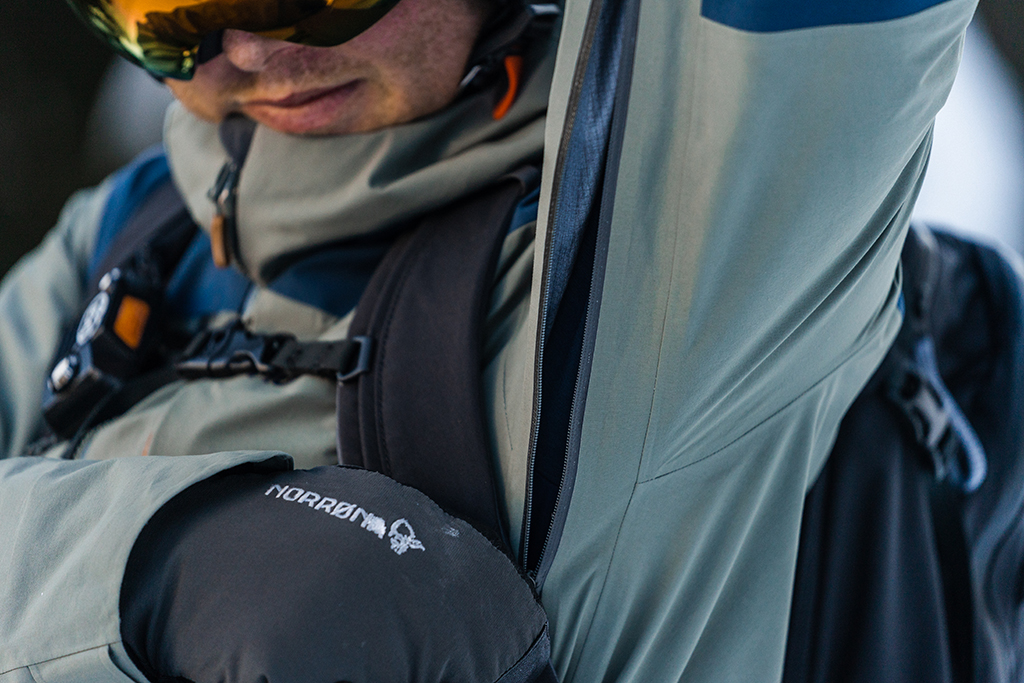
Easy-to-use functions and specifications for activities in snowy mountains
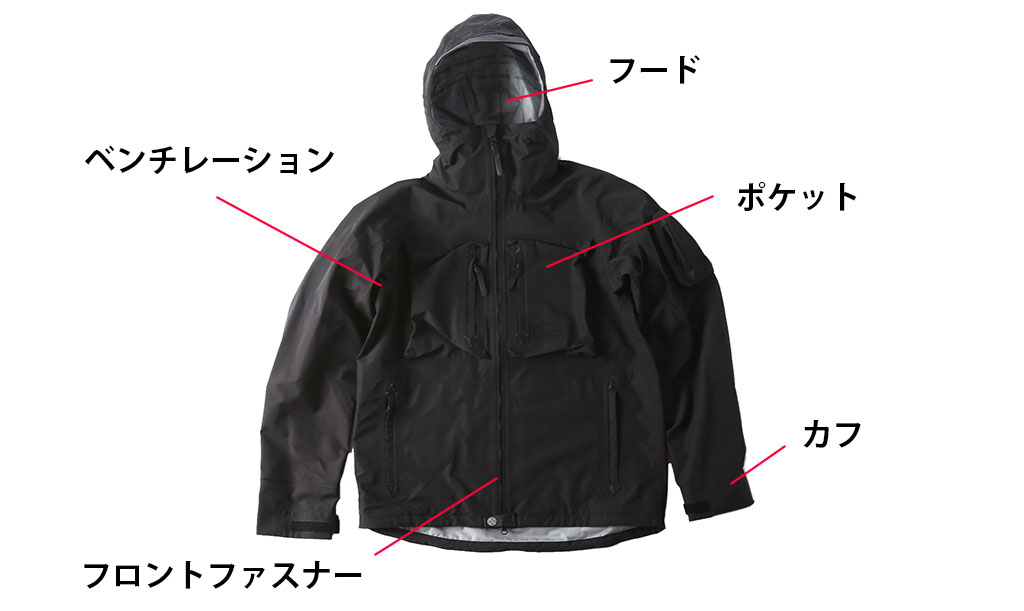
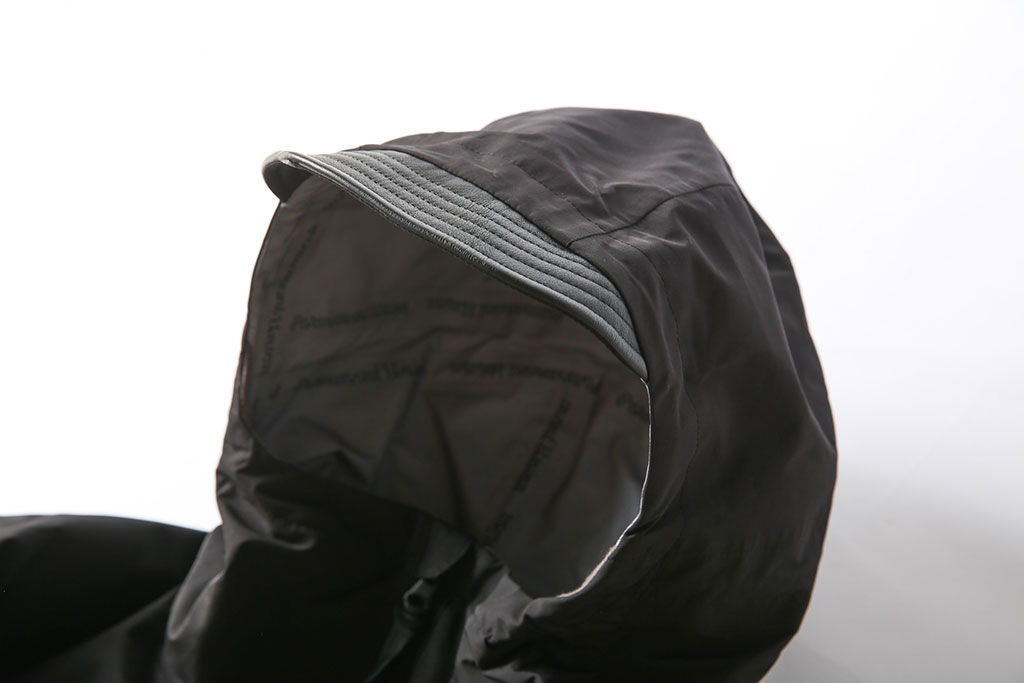
Hood
Demonstrates the effect of heat retention by blocking snow and wind. In that sense, it is a representative of a mechanism that can adjust heat retention according to the situation. Recently, large-capacity products that can be used even when wearing a helmet have appeared.
Front zipper
Considering that you need to put on and take off your clothes to adjust your body temperature, the full zipper makes it easy to use. It is sturdy enough to block wind and snow from the front, and flexible enough to follow the movement of the body.
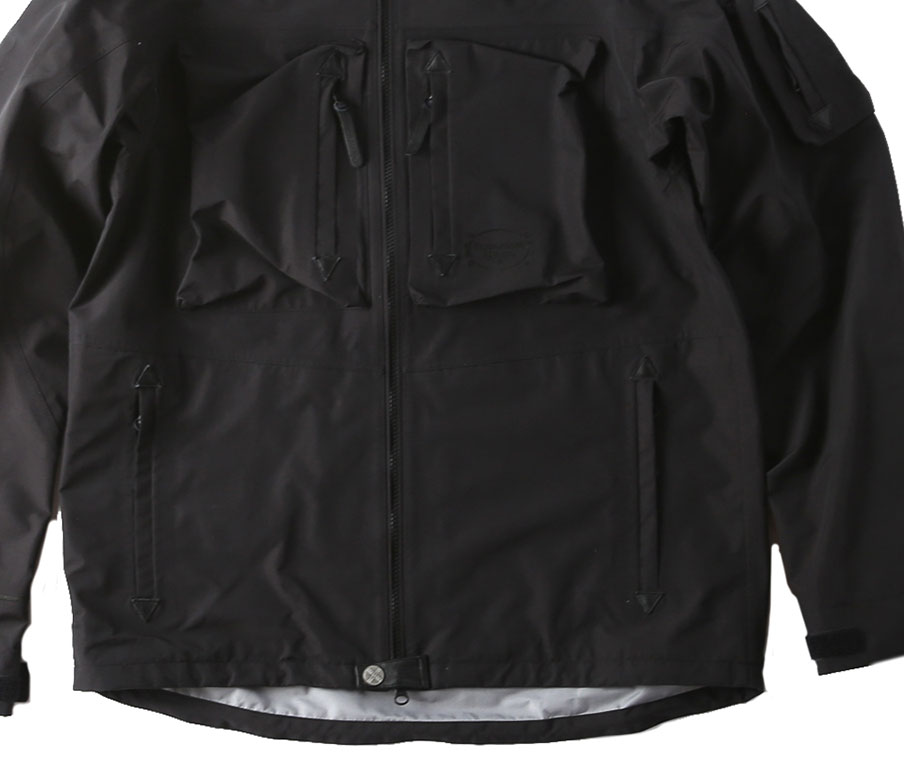
pocket
on the belly is for warming hands, and the pocket on the chest is used for small items. The zippers on the pockets that store small items stand out from the top and bottom, but this is to prevent the contents from falling out even if the zipper is not completely closed.
Ventilation Serves
as a window to let outside air in to regulate body temperature. The reason why it is often installed under the armpit is that it is easy for hot air to accumulate, but there is also the reason that snow and rain are less likely to hit it because it is behind the arm.
Set a little longer so that it does not become tight when sliding the
cuff The cuff is often thick so that the cuff can be worn over the glove, and the adjustment range is wide so that it can be used flexibly with various gloves.
In addition, there are features that are often installed in jackets, such as
a powder skirt and wrist gaiters to prevent snow from entering the inside of the hem and cuffs, a cord to adjust the hood, a draw cord to tighten the hem, and wearing in the backcountry. Some of the conscious wear has a built-in RECCO reflector.
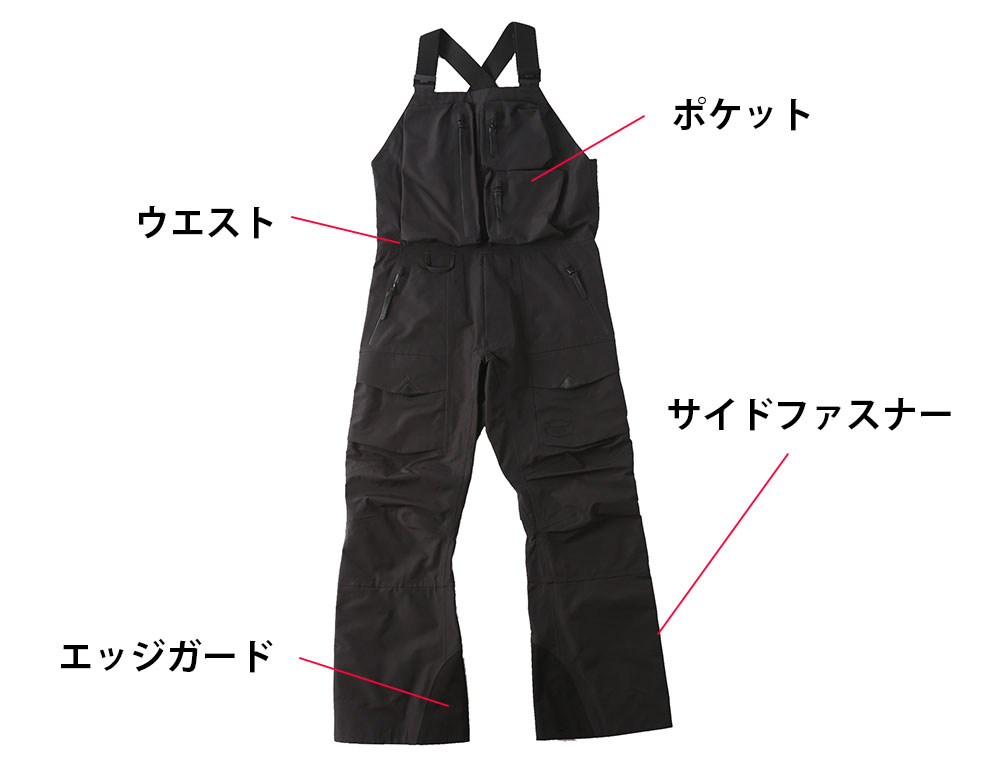
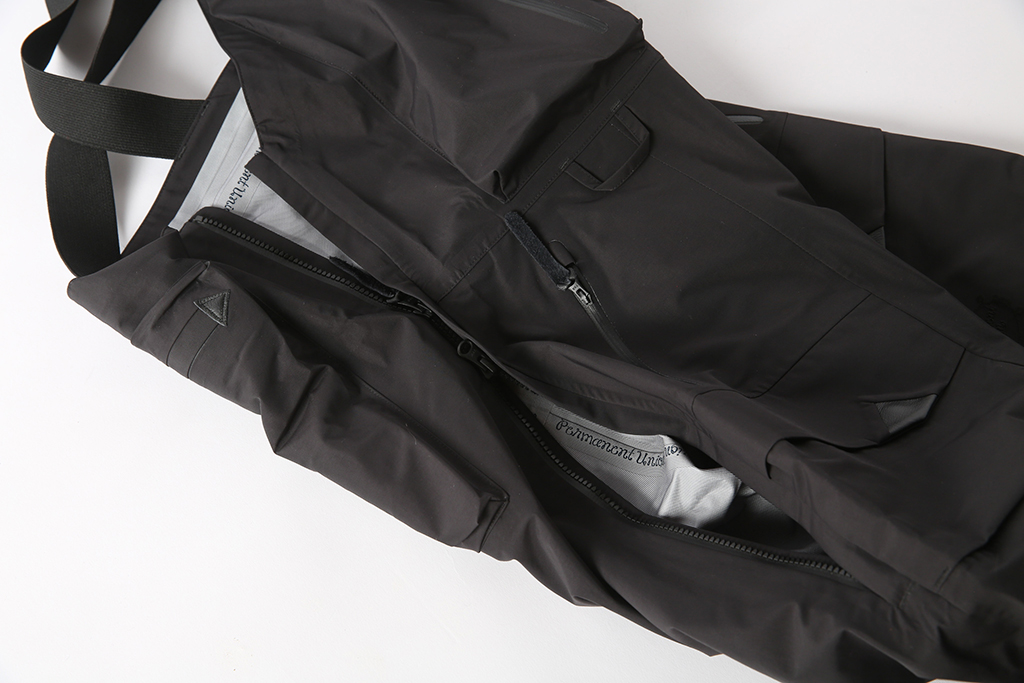
Side zippers on pants
Large zippers are sometimes laid out on the side of the thighs as ventilation. Most are set on the outside of the thigh, but there are also products on the inside or on both the inside and outside.
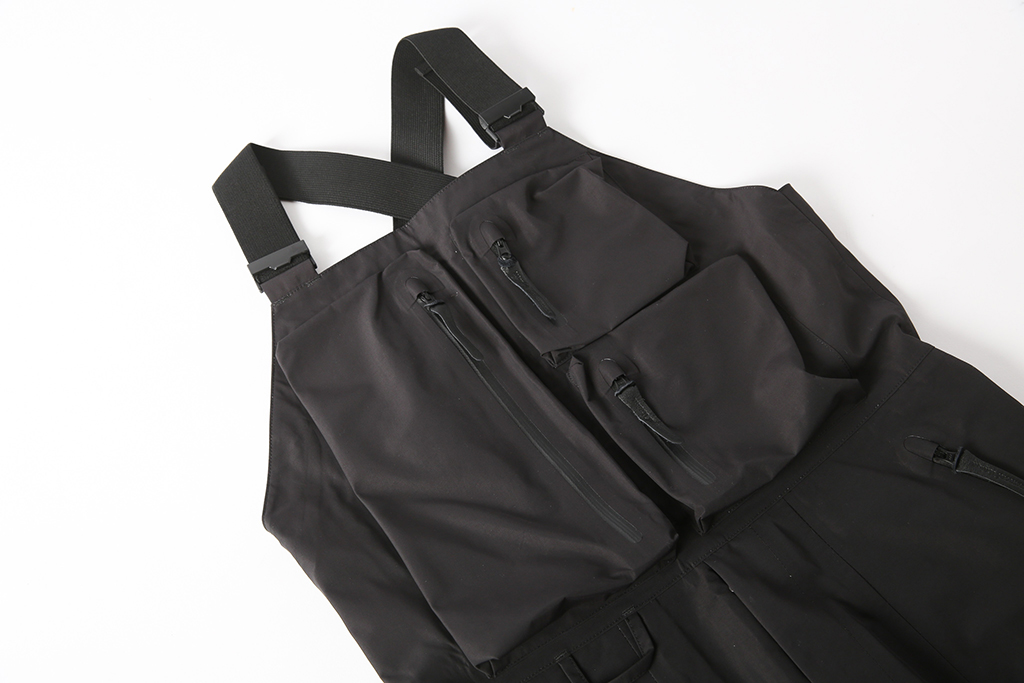
waist
so that your stomach and hips don't get cold, and snow doesn't get in when you fall. In addition, the waist size can be adjusted with hook-and-loop fasteners, etc., so the fit is not compromised even without a belt.
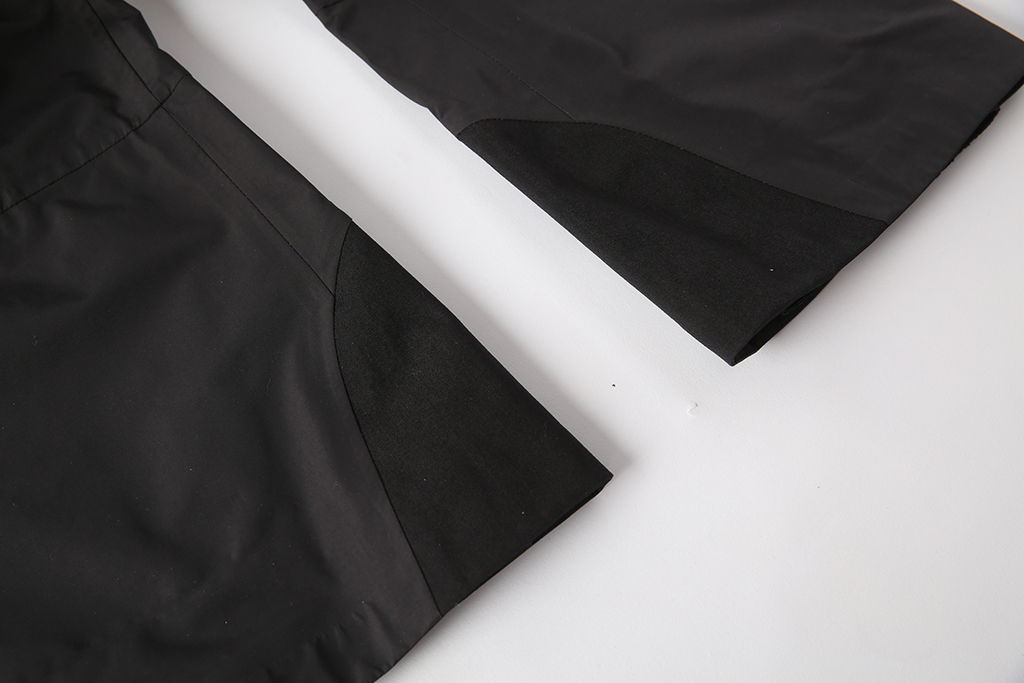
The inside of the hem is guarded with a durable material such as Kevlar so that it will not be cut by the edge . Although it is strong, it is devised so as not to impair its suppleness, and does not affect footwork.
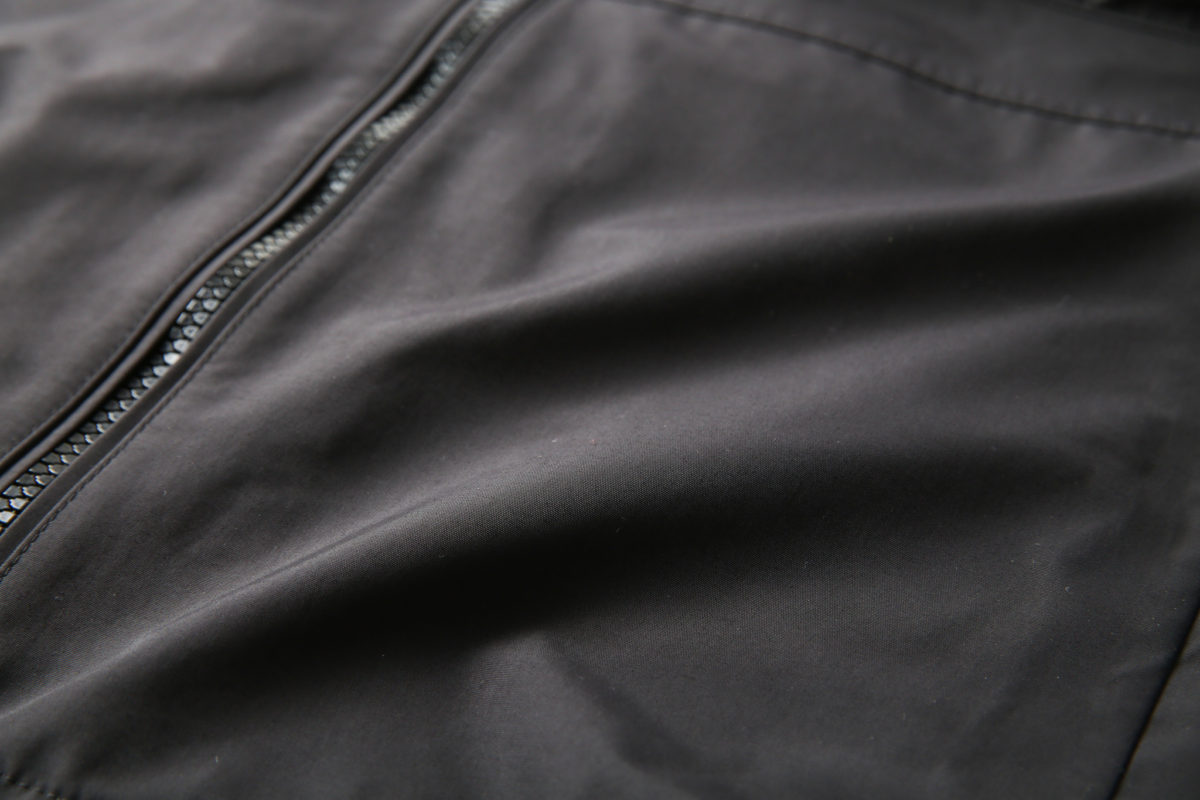
Fabric structure and functional role
The membrane is sandwiched between the outer material and the lining in three layers (outer material, membrane, and lining). 2 layers of membrane).
The 3-layer lining protects the membrane, improving durability, and the lining makes it slippery and comfortable to wear. The lack of lining makes the 2-layer more breathable and reduces the weight of the product. In addition, it is possible to achieve supple comfort. While making the most of these characteristics, the structure has been adopted in line with the product concept.
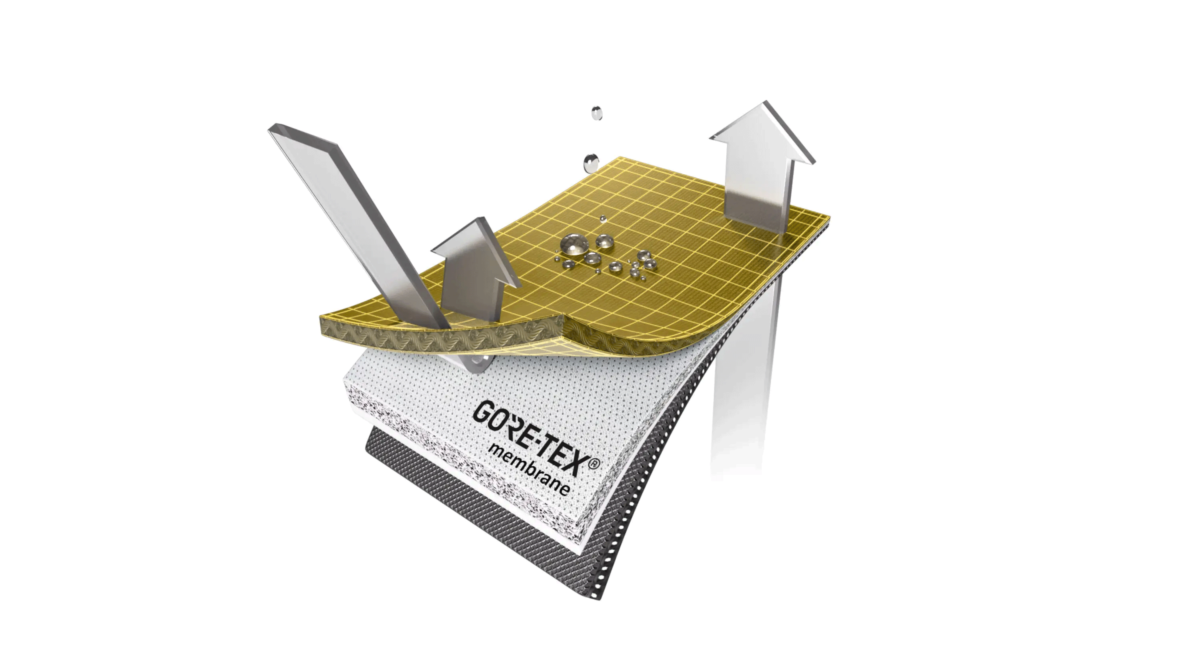
provided by: Gore Japan LLC
Functional role of outer material
The part that can be said to be the skeleton of the wear, repels snow and rain, maintains toughness, and adjusts the shape and color of the wear. Most of the materials are chemical fibers, and nylon-based materials are often used. This is because nylon's friction-resistant, elastic, and supple properties make it perfect for ski wear.
Functional role of lining
In addition to ensuring ease of movement by making things slippery under the clothing, comfort and comfort are improved by absorbing sweat. There are also products that use a lining with heat retention to increase cold protection.
Some stuffed
Some wears are filled with cotton to increase heat retention. Most of them use a chemical fiber batting that is resistant to moisture in preparation for snow and sweat. In addition, depending on the wear, there are also those that adjust the heat retention according to the distribution of body temperature, such as putting cotton in the front part of the body, which is prone to cold due to the wind during gliding.
Functional role of waterproof and breathable material (membrane)
Most skiwear in recent years has a waterproof and moisture permeable membrane called a membrane sandwiched between the outer material and the lining material.
In terms of sandwiches, the bread is the outer and lining, and the ham inside is the membrane. This membrane has more than 1.4 billion pores per cubic centimeter, and its microscopic pore structure creates waterproof, breathable, and windproof properties. Waterproofness and windproofness are self-explanatory, but moisture permeability refers to the ability to allow moisture inside clothing to pass through to the outside. It shuts out moisture from the outside due to rain and snow on snowy mountains, but it keeps moisture from sweating inside the wear and turning it into steam to the outside. Specifically, it expresses numerically how many grams of moisture in the vapor state that does not form water droplets in the clothes is released in 24 hours. Of course, the higher the value, the higher the moisture permeability.
The ability to maintain comfortable conditions through moisture permeability has a significant impact on climbing and sliding performance on snowy mountains. Therefore, the membrane has a very important meaning in snow wear. Understanding the characteristics of the membrane will give you a deeper understanding of what the snowwear is designed for.
There are various types of membranes, each with their own characteristics. GORE-TEX, NeoShell, and eVent, which are often used for shells and gloves, are well known.
The membrane is for "layering"
The items in the photo below are products for so-called "layering".
Layering is layering. In order to enjoy active activities comfortably and fully, it is necessary to respond flexibly to changes in body temperature that are constantly changing due to natural conditions and movement. Layering is what leads to performance and comfort on snowy mountains. The basics of layering is to wear three layers, starting from the closest to the skin, the "base layer", "middle layer", and "outer layer".
There are two main points at the base of layering. ・Do not let sweat-absorbed clothing touch your skin
・Dry sweat-absorbed clothing quickly
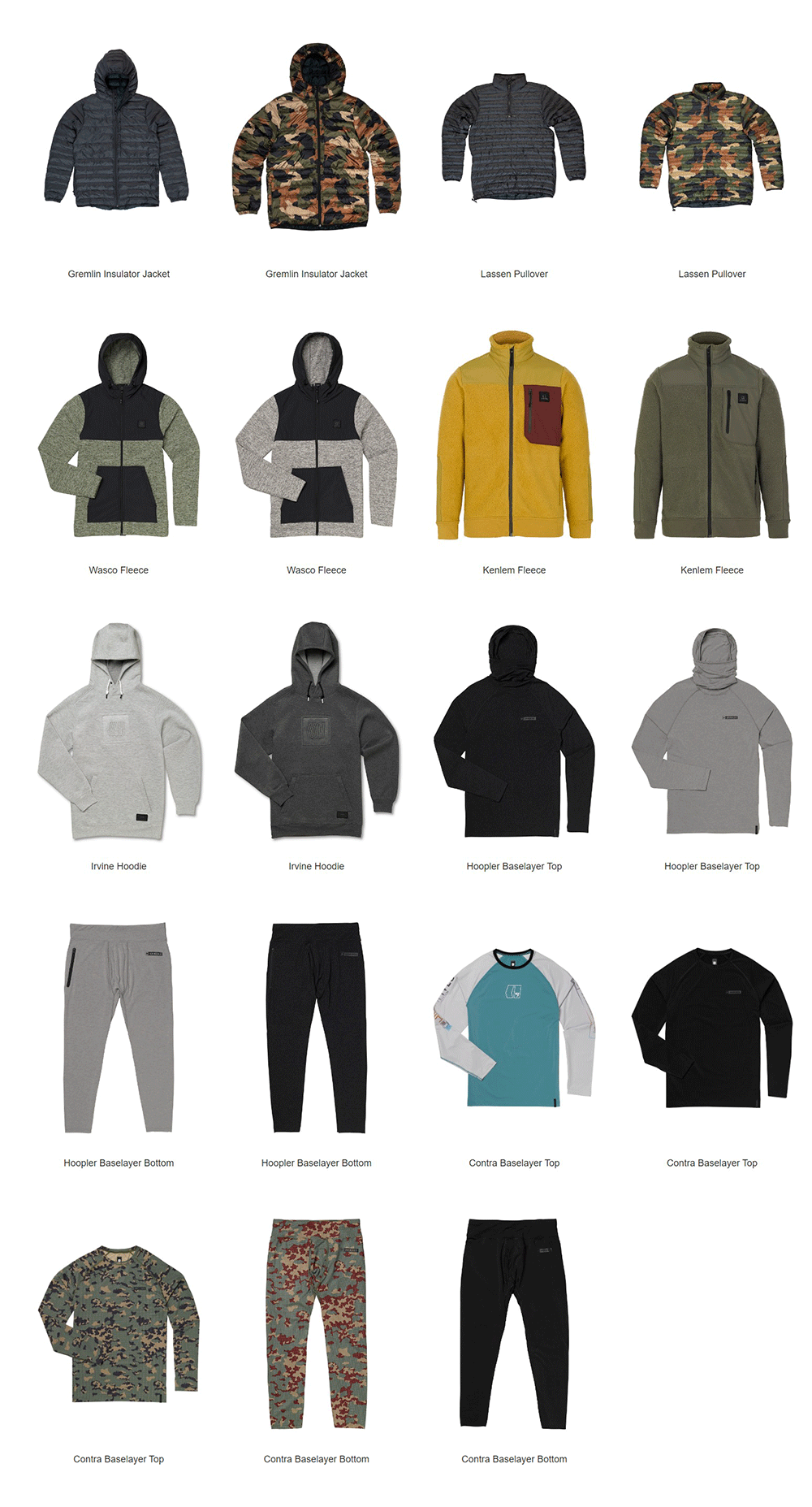
Layering is not simply about wearing layers of clothing, but rather by choosing materials and structures that focus on the characteristics that each layer should exhibit. The first layer, which is close to the body, is made of a material that does not leave sweat on the skin, and the second layer is layered with a layer that has the function of absorbing sweat, diffusing it, and evaporating it.
The role of the jacket (outer jacket) is to release the vaporized sweat from the second layer to the outside air.
For skiing, shell jackets are the equivalent. However, even if you release sweat, you want to block snow and rain. The realization of these contradictory functions is "waterproof and breathable," which allows only moisture to pass through and prevents water from passing through. In other words, "waterproof and breathable" is an extension of the concept of layering. Layering is essential to make full use of the waterproof and breathable properties. I don't think so. That's why I need this feature.
Additional knowledge you should know
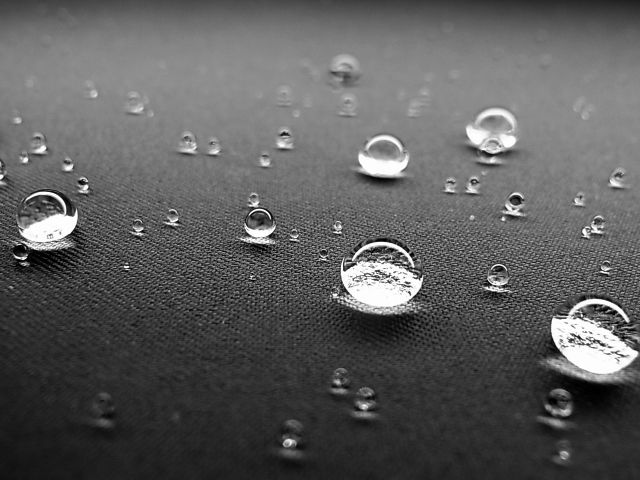
What is water pressure resistance?
Under the natural conditions of snowy mountains, there are many possibilities of constant exposure to blizzards and rain.
For your safety, you want to avoid getting your body wet and cold due to snow or rain. Waterproofness is essential for snow wear. It would be nice to have an image of water pressure resistance that expresses it in an easy-to-understand numerical value. In other words, water pressure resistance is a numerical value that suppresses the force of water that tries to soak into the fabric. With the numerical value of water pressure resistance, it is possible to know "how much water pressure it is waterproof".
Naturally, the higher the value, the higher the water resistance. A typical nylon umbrella has a water pressure resistance of about 200 to 500 mm, and a sturdy raincoat has a water pressure resistance of about 5,000 mm. Considering the environment where snow wear is exposed to rain and snow for a long time, it would be uneasy if it does not have a water pressure resistance of at least 10,000 mm.
When choosing clothes that you cannot decide whether to buy after wearing a sample in the snowy mountains, the water pressure resistance value is important information that can guarantee waterproofness.
What is denier, an index of fabric hardness?
Some wears are stiff and stiff, while others are very supple.
The difference is determined by the thickness of the outer fabric and the material of the lining. The notation D after the number displayed in the catalog is an abbreviation for the unit called denier. Denier represents the weight of the thread used in the fabric, and is a numerical value in grams per 9000 meters. In the catalog, this is indirectly connected to expressing the thickness of the fabric. Generally, 70 denier to 150 denier clothing stands out, but let's also know that the firmness and comfort of the fabric cannot be judged only by the number of denier.
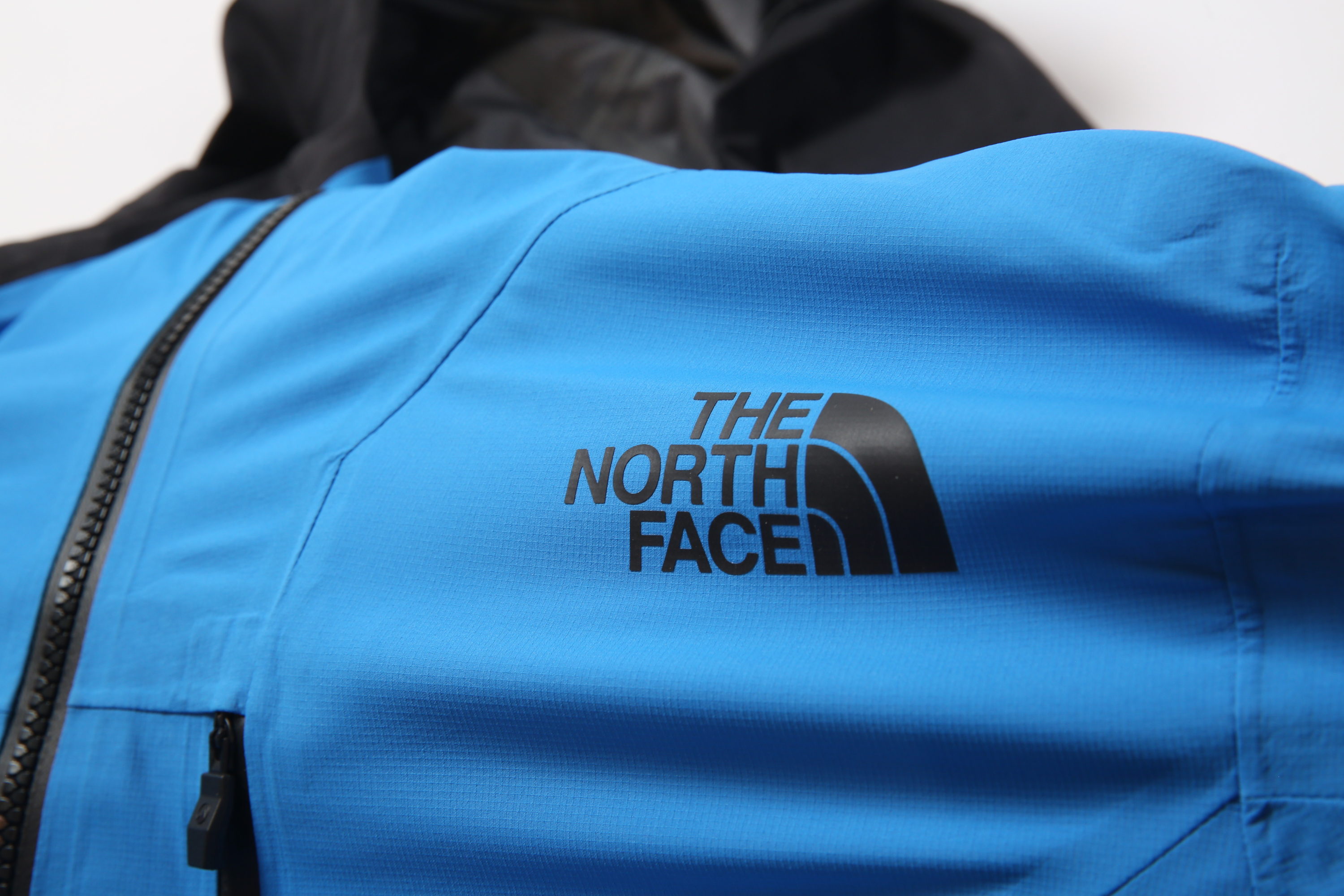
To give the fabric stretch
If the fabric stretches, it naturally becomes easier to move. In order to make it stretch, you either give elasticity to the threads that make up the fabric, or you make the fabric itself stretch by weaving. In any case, if the above-mentioned membrane is combined, the membrane itself will also need to be stretchable. Stretching waterproof and breathable clothing actually requires a very high level of skill.
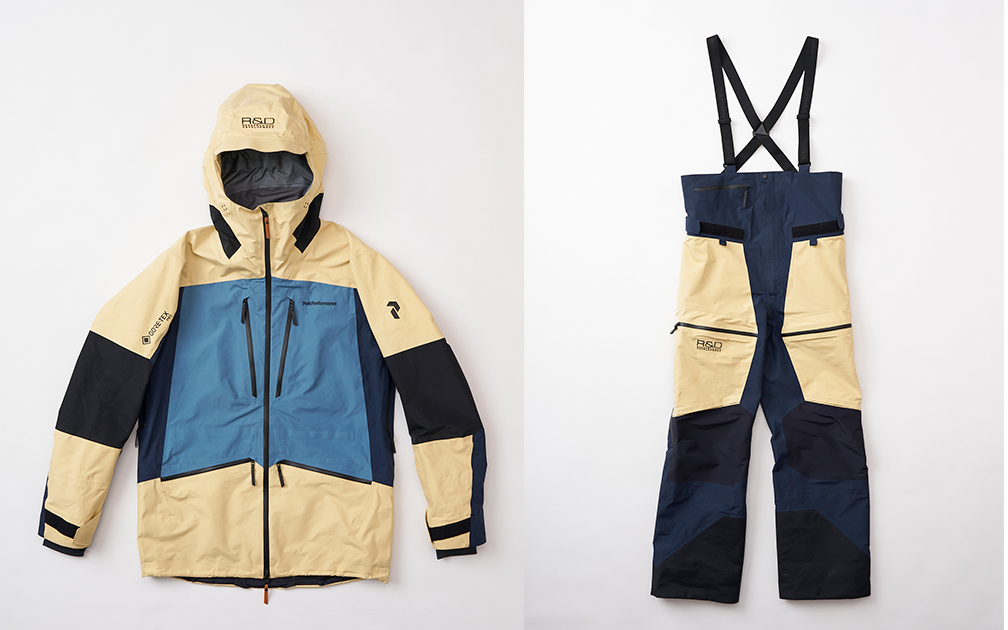
Clothing cutting
It's not enough just to use high-performance fabrics. Another important point is that the fabric is designed to fully demonstrate its capabilities. Wear that has a cut that considers the movement of the body, such as sliding on snowy mountains and climbing, has high mobility. For example, the knees and elbows that move a lot are draped, and the back is made of highly stretchable fabric so that movement is not hindered and stress-free. You should also pay attention to cutting.
I learned how to read catalogs and how to choose clothes
Once you understand the functional roles of clothing parts and fabrics in this way, you will be able to better understand the meaning and importance of the information posted in the clothing catalog. Give it a try. Let's pick up the product information of NORRONA's online store. I tried to express the functionality of the wear in red letters.
NORRONA
tamok Gore-Tex Pro Jacket

material is based on which uses 70 denier recycled nylon for the outer 's Most Rugged Technology
is used on the shoulders and elbows that are prone to abrasion and wear Reinforcement. new Gore-Tex Pro materials are placed in the right places to achieve high waterproof moisture permeability, windproofness, and durability . easy-to-use riding functions such as a helmet compatible hood, front ventilator, and cuff with built-in hand gaiter . The length is long and the loose fit creates a unique look, and while it is a technical product that is useful in the backcountry, it has a design that does not feel uncomfortable even on the slopes.
summary
Various functions and characteristic materials are used in modern snow wear. And now, waterproof and breathable materials are used as a matter of course for many wears. However, without a proper understanding of its meaning and function, it will not be possible to demonstrate its original performance. Understanding them will lead to more efficient use of the functions provided by the wear.
What kind of material is used for the wear and what is it for? How do you spend your time in the mountains? If you look at the wear from the functional aspect, you will be able to see what kind of wear you need. If you choose the one with that point of view, the new season's snow mountain skiing will surely be more comfortable and more fun.
text / Takuro Hayashi + STEEP

